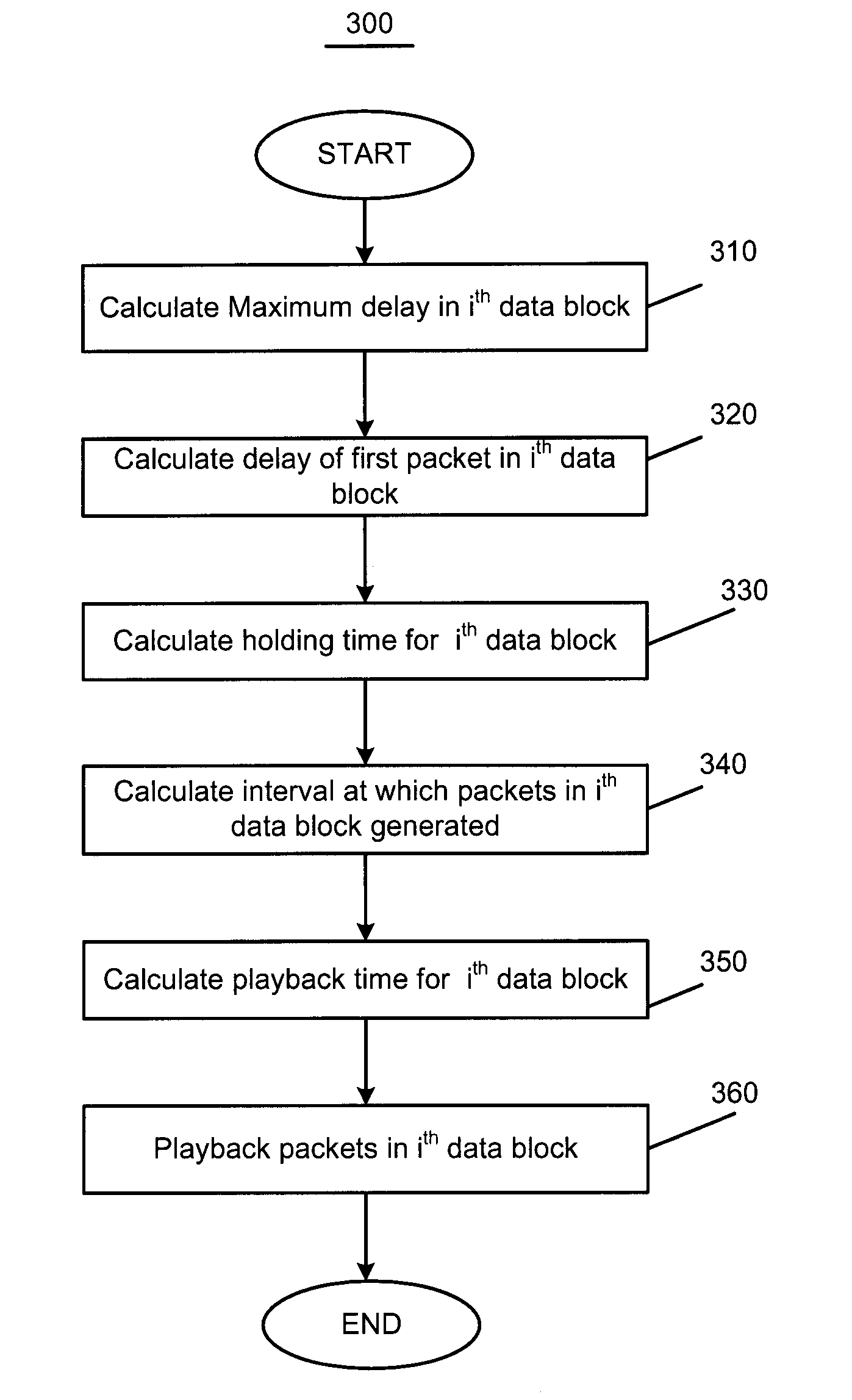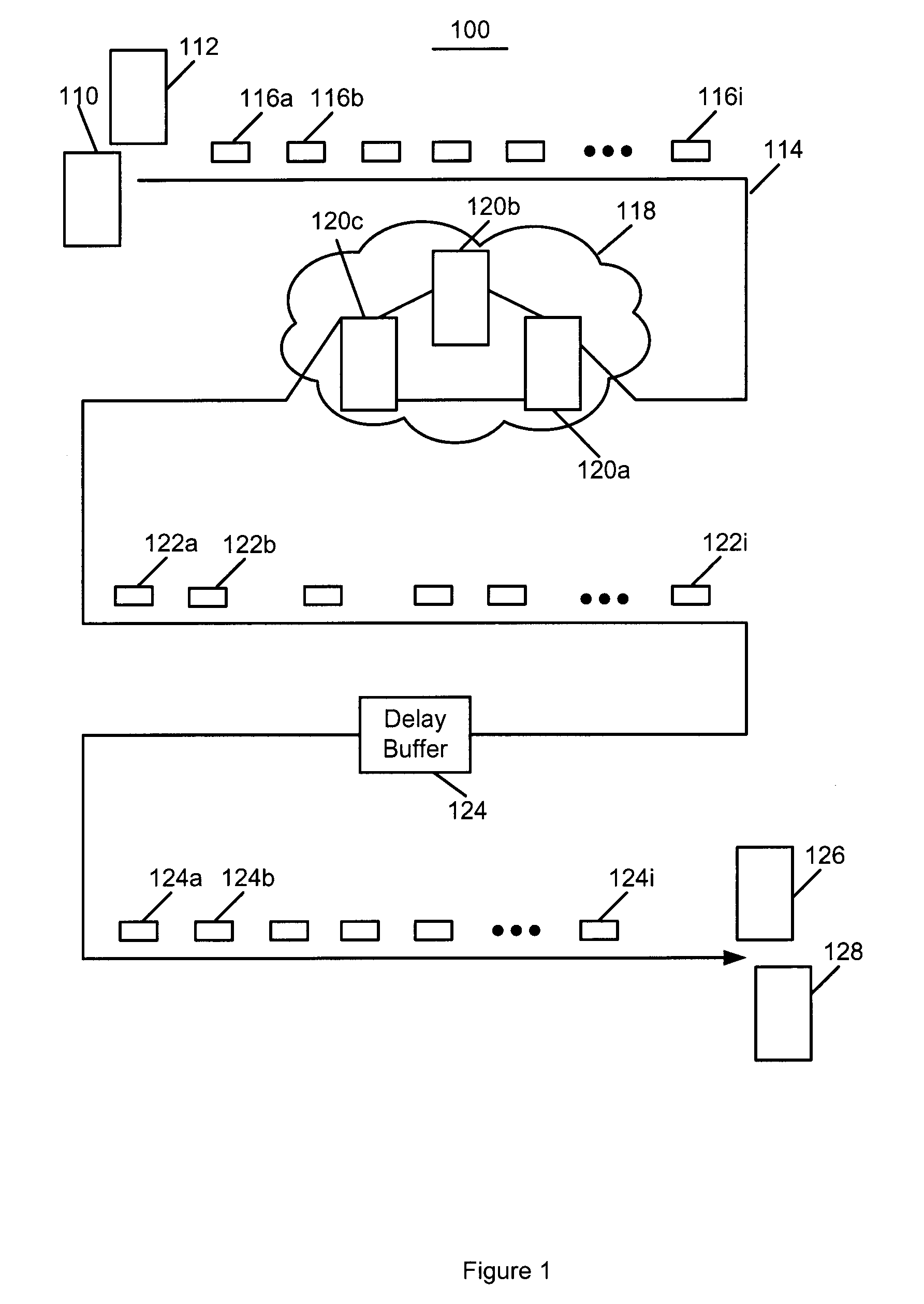System and method for adaptive removal of delay jitter effect and low end-to-end delay
a delay jitter and adaptive removal technology, applied in the field of system and method for adaptive removal of delay jitter effect and low end-to-end delay, can solve the problems of further degradation of network quality, packet loss, and delay exceeding 300 ms, and achieve the effect of preventing the interactivity of voice communications
- Summary
- Abstract
- Description
- Claims
- Application Information
AI Technical Summary
Benefits of technology
Problems solved by technology
Method used
Image
Examples
Embodiment Construction
[0012]In exemplary embodiments, systems, modules, methods and / or computer readable mediums for adaptive removal of delay jitter and low end-to-end delay are provided. The embodiments calculate a holding time for holding packets in a delay buffer. The holding time is based on the end-to-end delay of the first packet provided in the network. The packets may be output from the delay buffer in the order in which the packets were input into the network. With lower end-to-end delay of the first packet, the holding time may be lower. Accordingly, the embodiments provide a flexible methodology for altering the holding time according to the network characteristics. Further, the embodiments buffer the packets for a minimal holding time that is at least as low as (or lower than) the holding time for the conventional MDV method. After being output from the delay buffer, the packets may be played back at selected playback times that are a function of the holding time, and an interval of time ove...
PUM
 Login to View More
Login to View More Abstract
Description
Claims
Application Information
 Login to View More
Login to View More - R&D
- Intellectual Property
- Life Sciences
- Materials
- Tech Scout
- Unparalleled Data Quality
- Higher Quality Content
- 60% Fewer Hallucinations
Browse by: Latest US Patents, China's latest patents, Technical Efficacy Thesaurus, Application Domain, Technology Topic, Popular Technical Reports.
© 2025 PatSnap. All rights reserved.Legal|Privacy policy|Modern Slavery Act Transparency Statement|Sitemap|About US| Contact US: help@patsnap.com



